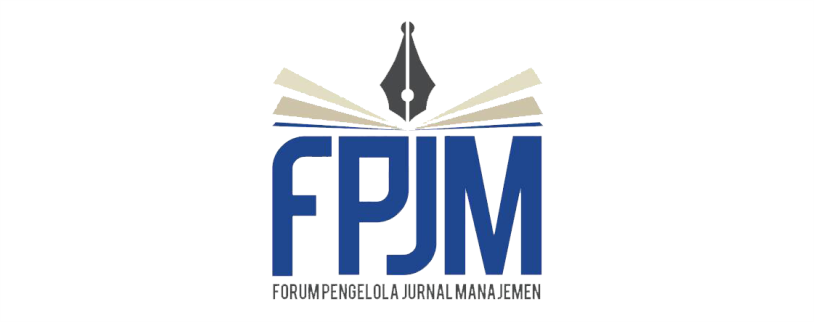Implementasi Konsep Tanggung Jawab Sosial sebagai Upaya Meningkatkan Efektivitas Pengelolaan BUMDes
DOI:
https://doi.org/10.26905/jmdk.v8i2.4768Keywords:
Social Responsibility, Triple Bottom Line, Village Owned Enterprises (BUMDes)Abstract
This study aims to initiate a model for the social responsibility framework of BUMDes. This research has the aim of initiating a model for the social responsibility framework of BUMDes, by considering its institutional structure as a strategic business entity and becoming one of the main pillars for developing the economic potential in rural areas. Considering stakeholders from BUMDes and the social responsibility domain framework based on the Triple Bottom Line concept, the potential impact of BUMDes existence is well recognized and the social responsibility domain for BUMDes is offered in this article. The practice of social responsibility for BUMDes has not become an interesting area or even has an urgency to be studied. Eventhough, BUMDes is the dominant engine of economic growth - creators of value principles and managerial resources - and that BUMDes have an obligation to contribute to the economic growth of rural communities - encourages the need to promote sustainability among stakeholders and increase the sustainability of business that managed by BUMDes
https://doi.org/10.26905/jmdk.v8i2.4768
Downloads
References
Azwardi, A., & Sukanto, S. (2014). Efektivitas Alokasi Dana Desa (ADD) dan Kemiskinan di Provinsi Sumatera Selatan. Jurnal Ekonomi Pembangunan, 12(1), 29–41.
Bhattacharya, S. S., Sahay, A., Arora, A. P., & Chaturvedi, A. (2004). A toolkit for designing firm level strategic corporate social responsibility (CSR) initiatives. Social Responsibility Journal, 4(3), 265–282.
Carroll, A. B. (1991). The Pyramid of Corporate Social Responsibility: Toward the Moral Management of Organizational Stakeholders. Business Horizons, (July-Agustus), 39–48.
Clarkson, M. B. E. (1995). A Stakeholder Framework for Analyzing and Evaluating Corporate Social Performance. The Academy of Management Review, 20(1), 92–117.
Dahlsrud, A. (2008). How Corporate Social Responsibility is Defined: an Analysis of 37 Definitions. Corporate Social Responsibility and Environmental Management, 15(1), 1–13.
Eberle, D., G.Berens, & Li, T. (2013). The Impact of Interactive Corporate Social Responsibility Communication on Corporate Reputation. Journal of Business Ethics, 118, 731–746.
Frederick, W. C. (1998). Creatures, corporations, communities, chaos, complexity: a naturological view of the corporate social role. Business & Society, 37(4), 358–389.
Freeman, R. E. (1994). The politics of stakeholder theory. Business Ethics Quarterly, 4(4), 409–421.
Freeman, R. E., Wicks, A. C., & Parmar, B. (2004). Stakeholder Theory and “The Corporate Objective Revisited.†Organization Science, 15(3), 364–369.
Friedman, M. (1970, September 13). The social responsibility of business is to increase its profits. New York Times Magazine.
Harrison, J. S., & Freeman, R. E. (1999). Stakeholders, social responsibility, and performance : Empirical evidence and theoretical perspective. Academy of Management Journal, 42(5), 479–485.
Hou, J., & Reber, B. H. (2011). Dimensions of disclosures: Corporate social responsibility (CSR) reporting by media companies. Public Relations Review, (37), 166–168.
Husted, W. B., & Allen, D. B. (2007). Strategic Social Responsibility and value Creation among large Firms Lessons from the Spanish Experience. Long Range Planning, 40(6), 594–610.
Jamali, D., & Mirshak, R. (2007). Corporate Social Responsibility (CSR): Theory and Practice in a Developing Country Context. Journal of Business Ethics, 72, 243–262.
Kolopaking, L. M., Septianto, M., & Ambarita, E. (2019). Sinergi Pengelolaan Desa Membangun Dengan Kegiatan Corporate Social Responsibility (Studi Kasus PT. Indonesia Power, Gunung Salak). Sodality: Jurnal Sosiologi Pedesaan, (Agustus 2019), 102–109.
Kristia. (2019). Model Bisnis Triple Bottom Line Pasar Komunitas Makanan Sehat dan Pengembangannya dalam Mewujudkan Rantai Pasok Pangan Berkelanjutan. Jurnal Manajemen & Kewirausahaan, 7(2), 139 – 153.
Luo, X., & Bhattacharya, C. B. (2006). Corporate social responsibility, customer satisfaction, and market value. Journal of Marketing, 70(4), 1–18.
Nurbaiti, S. R., & Bambang, A. N. (2017). Faktor – Faktor yang Mempengaruhi Partisipasi Masyarakat dalam Pelaksanaan Program Corporate Social Responsibility (CSR). In Proceeding Biology Education Conference (pp. 224–228).
Phillips, R., Freeman, R. E., & Wicks, A. C. (2003). What Stakeholder Theory is Not. Business Ethic Quarterly, 13(4), 479 – 502.
Sen, S., & Bhattacharya, C. B. (2001). Does Doing Good Always Lead to Doing Better? Consumer Reactions to Corporate Social Responsibility. Journal of Marketing Research, 38(2), 225–243.
Sen, S., Bhattacharya, C. B., & Korschun, D. (2006). The Role of Corporate Social Responsibility in Strengthening Multiple Stakeholder Relationships: A Field Experiment. Journal of the Academy of Marketing Science, 34(2), 158–166
Downloads
Published
Issue
Section
License
Authors who publish with this journal agree to the following terms:
(1)Â Copyright of the published articles will be transferred to the journal as the publisher of the manuscripts. Therefore, the author confirms that the copyright has been managed by the journal.
(2) Publisher of Jurnal Penelitian is University of Merdeka Malang.
(3) The copyright follows Creative Commons Attribution–ShareAlike License (CC BY SA): This license allows to Share — copy and redistribute the material in any medium or format, Adapt — remix, transform, and build upon the material, for any purpose, even commercially.












